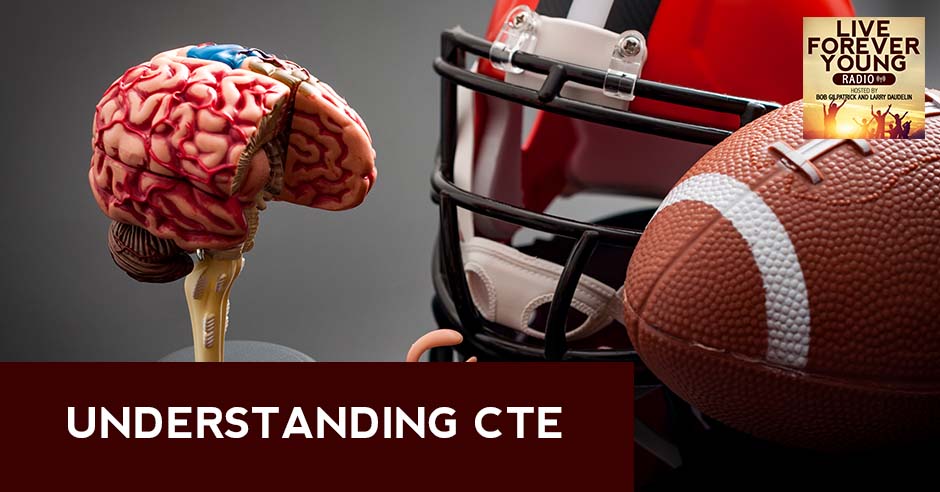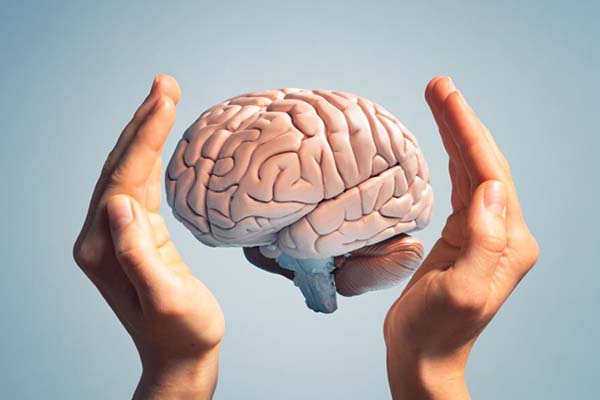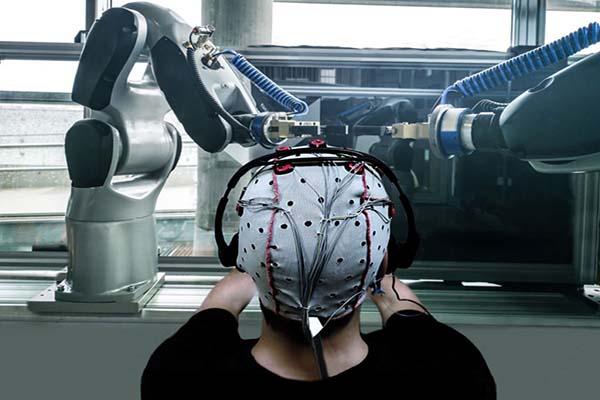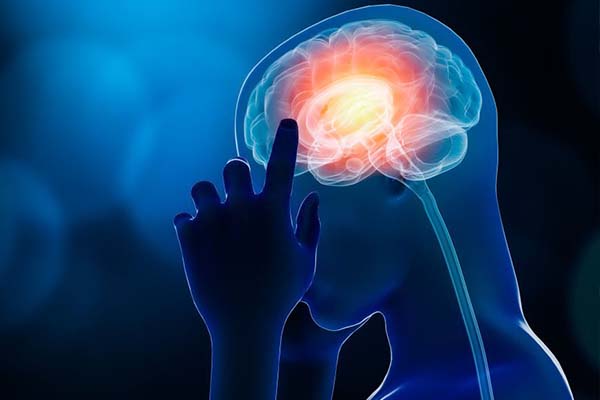Understanding CTE (Chronic Traumatic Encephalopathy)

Recent studies have shown that 99% of Ex NFL Players have been diagnosed with a degenerative brain condition called chronic traumatic encephalopathy (CTE). This condition often begins years or decades after their years as active athletes. Symptoms include memory loss, impaired judgment, depression, and anxiety. In today's episode, Rollie Club and Bob Gilpatrick will look at what they have known so far with CTE. They dive into its history and identify who it affects the most, what symptoms to look out for, what damage a concussion can cause and its possible treatment methods. Take a seat and listen so that you can too, live forever young.
---
Watch the Podcast Here:
Listen to the podcast here
Understanding CTE
Chronic Traumatic Encephalopathy
In this episode, Rollie and Bob take a look at everything that we know so far about CTE. They dive deep into the history of the condition and identify who it affects the most, what symptoms to look out for and the damage that concussions can cause. Learn about some alternative treatments that athletes have used to help overcome the effects of CTE and some great resources to help support individuals and families of those who may have CTE. Sit back, read, and get ready to live forever young.
---
I'm here with Rollie.
I got my football stuff on because we are going to be talking about an important topic that a lot of people are starting to learn a lot more about. It's called Chronic Traumatic Encephalopathy.
It’s CTE for short. It tends to be something that happens to football players because it’s also known as the concussion disease. Football players are in a very heavy contact sport and tend to get concussions more often than other people. They are more susceptible to CTE.
When we were looking up some information on CTE, they first started recognizing it in the 1920s, around 1928. They started recognizing it mostly with boxers because they are taking the blows to the head. They would use the term ‘punch-drunk’ back then. If you have too many punches, you are punch-drunk. It was the CTE, Chronic Traumatic Encephalopathy, that they were starting to realize what was happening.
Many years later, they started realizing that it was in all contact sports. The ones where you come into high-impact with somebody. A lot of the times, especially with the way the safety things were, it affects people negatively. When we looked at some statistics, we found that the study they did at Boston University, 99% of the brains from NFL football players had CTE.
There was a movie about this that we have seen called Concussion with Will Smith. This was a case where a doctor, Dr. Omalu, who's from Nigeria.
He's a Nigerian pathologist.
He was doing research and had the opportunity to do an autopsy on a football player named Mike Webster who was the center for the Pittsburgh Steelers, and had numerous concussions and exhibited lots of symptoms that are now characteristics of people with CTE. He decided to do this autopsy to see what his brain looked like. They found out on autopsy that he did have CTE.
 Chronic Traumatic Encephalopathy: In your brain, you have these proteins called tau proteins, which are precious proteins. They help with the scaffolding of the inside neurons.[/caption]
Chronic Traumatic Encephalopathy: In your brain, you have these proteins called tau proteins, which are precious proteins. They help with the scaffolding of the inside neurons.[/caption]
Dr. Omalu, when he found this out, he went to the NFL and told them. He did a study on two different brains from former NFL players, Mike and another one. When he went to them both times, the NFL tried to brush it under the rug, “Those studies aren't accurate.” By the time he went the second time, there was a lot more information coming out in the press about CTE.
By the time that it happened, an article had been released. That article went into a lot of detail about the procedures that Dr. Omalu was performing. Right around that time, there had to be a house judicial committee hearing with Mr. Roger Goodell. At that time, there were a lot of hearings about how to make it safer, safety concerns, and things that the NFL was going to be doing in the future to make it better for players.
Later on, in 2015, there was a lawsuit brought by about 5,000 ex-NFL players against the NFL, and they were awarded $765 million as compensation for their injuries. What are the symptoms that people exhibit who have CTE? It's important to know that sometimes when people exhibit symptoms as if they had CTE, when they did the autopsy later, it turns out they didn't have CTE. It's good to remember that there might be other causes. When we talk later about some of the treatment options that they might work even better if someone is exhibiting symptoms, but doesn't have CTE.
We'll get to that, but some of the symptoms that people will exhibit is confusion, being disoriented or maybe getting lost. Starting to have memory loss, headaches or blurry vision. People get really sensitive to light and to loud sounds. They get irritable and they tend to have sleep issues, which leads to lots more complications. The worst scenarios, they can become very erratic, aggressive, unpredictable and suicidal. We have had situations here in Tampa Bay with ex-pro football players with Tampa, without mentioning any names, they were very beloved community figures, popular, kind, and supportive men that had done lots for the community that ended up dying from CTE.
All of a sudden, their demeanor changes. Everything changes about them, and then it ended up not being a real good outcome.
If you know someone who has had a lot of concussions and they start to exhibit this, these are the things that might indicate that this is what's going on.
We call it Chronic Traumatic Encephalopathy, which is chronic, something that recurs over and over again. Traumatic injuries and Encephalopathy means a shrinking of the brain. We are talking about CTE and what's going on. What's happening in the brain? That's what we want to know.
In your brain, you have these proteins that are called tau proteins. They are very valuable proteins. They help with the scaffolding of the inside of neurons. Proteins are always folding. Proteins are very elaborate, intricate structures. They fold, unfold and as they do, things change. Polarities change. Then they can combine with other proteins and participate in metabolic pathways. When they stop folding correctly, this creates all kinds of problems.
"CTE tends to be something that happens to football players because they are in a very heavy contact sport and tend to get concussions more often."
In the case of CTE, if you end up with tau proteins not functioning properly, they get deposited into all over your brain, but particularly in the little troughs in the folds. If you look at a brain, it looks like it's wrinkled. You have these raised parts and troughs, and the tau proteins will get down in those troughs like a little trench. That's the signature of CTE.
When they do that, from what we were reading, these proteins entangled themselves with each other.
They create tangles that end up interrupting cell signals all throughout the brain, and you end up with the symptoms you talked about.
If you got tangled up proteins in the brain, it's making all the signals go different places that they shouldn't. You are going to feel disoriented, confused, and not remember anything because you've got all these tangles. It's like Christmas time. You pull out the Christmas lights. It's like, “Here's a little knot,” this giant thing you’ve got to untangle, the lights will never work.
It’s the same concept. How it works? What the chemistry of these tau proteins and how it's affecting the brain is pretty well-known now. We have to look at what can people do to try to change things? We know that inside the brain, there are numerous things going on including electrical, chemical, and also waveforms. We know that they all interplay together.
We know that if you have a particular waveform in a part of the brain, it can either facilitate or inhibit a chemical process. We know that there are ways to manipulate those waveforms, including technology called neurobiofeedback. Neurobiofeedback has been around for decades. We know of a story of a person who had numerous concussions, and one severe concussion that put them out of commission in the National Football League, Boomer Esiason. We know we can use his name because he was public about it at the time.
Now, he is fully recovered and is a broadcaster. He’s doing very well. At the time what he did for treatment, because he wasn't able to play anymore, and he wanted to get back to play, is he went to get neurobiofeedback treatments. Neurobiofeedback is a process where the patient will wear this leather helmet that has these detection devices in it. They are detecting brainwaves. There is a normal range over here, and then here's the patient that's had the concussion. The doctor can see exactly which parts of the brain the brainwaves have been knocked out a whack.
They have a good reference of the healthy brain and messed up brain.
 Chronic Traumatic Encephalopathy: Neuro biofeedback is a process where the patient will wear this leather helmet with these detection devices that detect brainwaves.
Chronic Traumatic Encephalopathy: Neuro biofeedback is a process where the patient will wear this leather helmet with these detection devices that detect brainwaves.
Using a computer screen and a software program where they program in specific parameters, they can change the brainwaves in the patient's head in specific regions of the brain. The way they do it is they will use either a technique where you have to practice concentrating. In this case, they used an airplane for Boomer Esiason.
He would look at the computer screen. This little airplane would start to fly across the screen, and then it would dive and crash. His job was to focus on imagining it flying all the way across the screen without crashing. While he was doing that, in order to make that occur, he had to have that specific area of his brain that was being treated, vibrating in a specific brainwave. As he focused on that plane flying across, it started to train his brain to go back to the proper brainwave.
Nowadays, they also use it with humor. If you are trying to take a section of the brain that's vibrating mostly in beta, but it's supposed to be in theta. Occasionally, it will hit theta and the scientists are eavesdropping with this helmet. When it hits theta, they quickly turn on a video clip of the patient's choice, which is humorous. You can watch a comedy show on TV or a clip from a movie.
What happens is the humor is teaching that part of the brain that it's now associated with theta. Humor is a preferential state of mind, and so it starts to reprogram that part of the brain to vibrate into theta and beta. That's an example. As these brainwaves get reset, the difficulties someone has been having with focus, concentration or sleep, those go away and they can function normally again.
In the case of Boomer Esiason, not only was he able to go back and play football again, but when he went back to play, he set an NFL record for the most passing yards in a game. He came back stronger than ever. He was treated at a place in Upstate New York called the Alexandria Institute of Integrative Medicine, and they were specialists in neurobiofeedback there. It worked well. Other famous athletes whose names we can't use, were also treated at that facility, but in their perspective sport, they were equally as famous as Boomer, and also had the same concussion issue. They were not able to play, went from treatment, and able to get back and play again.
I'm glad you are talking about the treatments because one of the things when we were talking about how the tau proteins are formed, and then they fold. There's been a lot of research done showing that the concussions themselves are sometimes what caused these tau proteins to not be created correctly to fold.
A lot of it is related to inflammation. We know that concussions can create inflammation. We know from another study that was done on many different people where they measured inflammation. The reason they did is back during those original studies in 2009, they gave a list of follow-up research suggestions to see if there were other conditions that were contributing to the CTE in addition to the concussion, and they recommended investigating inflammation. This one group of scientists did that. Their conclusion at the end of the study was in every case where the people had low inflammation, they never developed CTE. We know from the episode we did on inflammation, the Inflammation And Your Health, that you can do that.
We talked about plenty of ways to lower it. One of the things that we are blessed to have is our Gladiator and Heirloom Barley because it has a powerful antioxidant in it that helps to scavenge free radicals and lower inflammation. It’s one of the best things you could use.
"If you know anybody who might have symptoms of CTE and they might be playing a sport that would cause it, you can check out https://concussionfoundation.org/ for some really good information."
You can lower inflammation in your brain and all throughout your body using that compound, superoxide dismutase, plus trimethylglycine and glutathione, which are in the Boomer Boost product. Combine them together, and you can reduce your inflammation by a factor of ten. It could be the exact thing that somebody might need, who you might know that's had concussions, to prevent them from manifesting with CTE.
We talk on every show that inflammation is the root of plenty of chronic diseases. It might not be the root of this one, but it's certainly a very large contributing factor from what we can tell so far. To get rid of that, it would be helpful. When you have a lot of inflammation, you are not comfortable. When you are not comfortable, you have a hard time sleeping. One of the things that we are trying to get people that are suffering with CTE is help with sleep. There are studies that show that if you don't sleep, your brain shrinks even more. That's the last thing they need to do is not sleep.
Even if they have CTE, people can take advantage of some of the information that's in our episode on sleep. For example, if someone is sensitive to light, that's a problem. Then you are going to avoid the light during the daytime, and it's going to be difficult for your body and mind to know that it's nighttime when the sun goes down.
There's a way that you can get light that will not be offensive to a person who is light sensitive. They have these lights that you can put on the wall that give out red lights and non-visible light. Near-infrared light and infrared light is emitted by this device. Your body will absorb the photons. It will realize that it's daytime, and you'll be in a waking state. Then at nighttime, you want to make sure everything is dark.
An hour before bedtime, you want to make sure that you wind down all light that's blue, and get into bed in a completely dark room. People can tend to have their mind racing. People with CTE, it happens a lot. You need the techniques for relaxation, which you can learn to do lymph drainage for yourself. You can learn to relax your tongue. You can learn to do Emotional Freedom Technique.
We have videos on our YouTube channel, Boomers Forever Young. Take a look, and under Playlists, you'll find the Emotional Freedom Technique and the ultimate mind-calming exercise. It’s very helpful to sleep. I wanted to mention, we are talking about CTE as if we are able to diagnose it. We are talking like that. We can't do that. You can diagnose it, unfortunately, until the person passes away and you cut open their brain.
What we are talking about is people who might exhibit symptoms like that. If you want to make sure these things don't happen with some of these creative treatments, you can try to not let it manifest to keep your inflammation down with inflammation reduction. Look into things like neurobiofeedback. There's also a good resource that we found, ConcussionFoundation.org. That's one we wanted to tell you about. If you know anybody who might have these symptoms and they might be playing a sport that would cause it, you can check out ConcussionFoundation.org for some good information.
It has information there for caregivers too. There's a book written about caregivers for people with Alzheimer's disease. It's called The 36-Hour Day. Similarly, people with CTE, because of their symptoms, it can cause a lot of strain on the family and the caregivers. People can read that book. Also, it has lots of information for supportive caregivers, ConcussionFoundation.org as well.
 Chronic Traumatic Encephalopathy: Inflammation is the root of plenty of chronic diseases. It might not be the root of this one, but it's certainly a very large contributing factor from what we can tell so far.
Chronic Traumatic Encephalopathy: Inflammation is the root of plenty of chronic diseases. It might not be the root of this one, but it's certainly a very large contributing factor from what we can tell so far.
I don't know if you noticed, but we have been sponsoring a lot of MMA fighters lately. We have had Jesse Arnett. We also have Kyle Driscoll and Curtis Demarce. These are some great MMA fighters that we are proud to sponsor. We excited to have them use our Gladiator Barley because of the protective effects it can have on reducing inflammation and helping with their recovery time. If you haven't read our blogs about it, go to BoomerBoost.com. Check out our blogs, and you'll be able to read all about Jesse and Kyle. Kyle has a match coming up for the Lightweight Cage Warriors Championship.
He's over in London fighting for the world championship.
Hopefully, we'll have another champion on our side, and Gladiator Barley keeping them healthy and strong.
As we do with Jesse, he won the championship in the 135 weight.
Jesse Arnett, UAE Warriors Featherweight Champion. We won that on July 2nd, 2022. We have a blog up about that. Go read all that and check it out. Get caught up. Give us a like and subscribe on our YouTube channel. We can't wait to see you.
Thanks, everybody, for reading the episode. Thank you, Rollie. See you on the next episode.
Important Links
- Inflammation And Your Health - Past episode - Inflammation And Your Health
- Boomer Boost
- Episode - Past episode - Tips For Better Sleep
- Boomers Forever Young – YouTube
- Emotional Freedom Technique on YouTube
- ConcussionFoundation.org
- The 36-Hour Day





Leave a comment